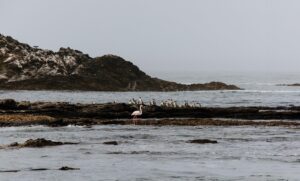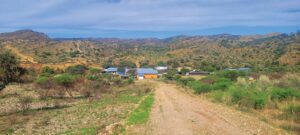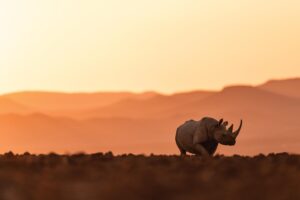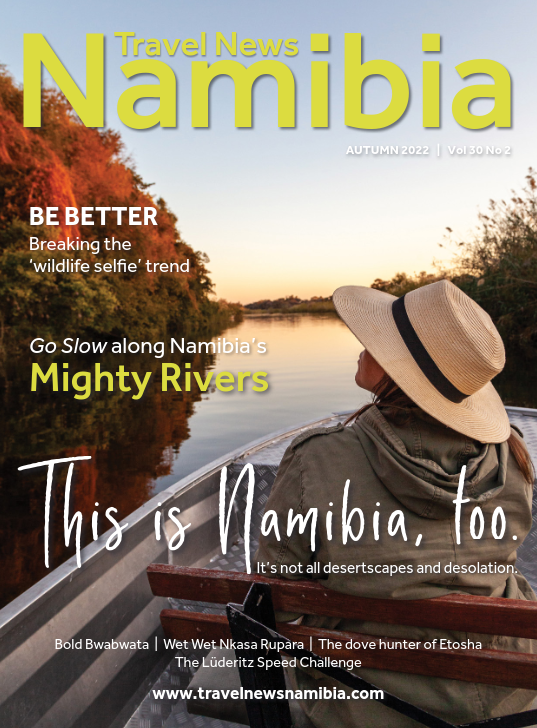
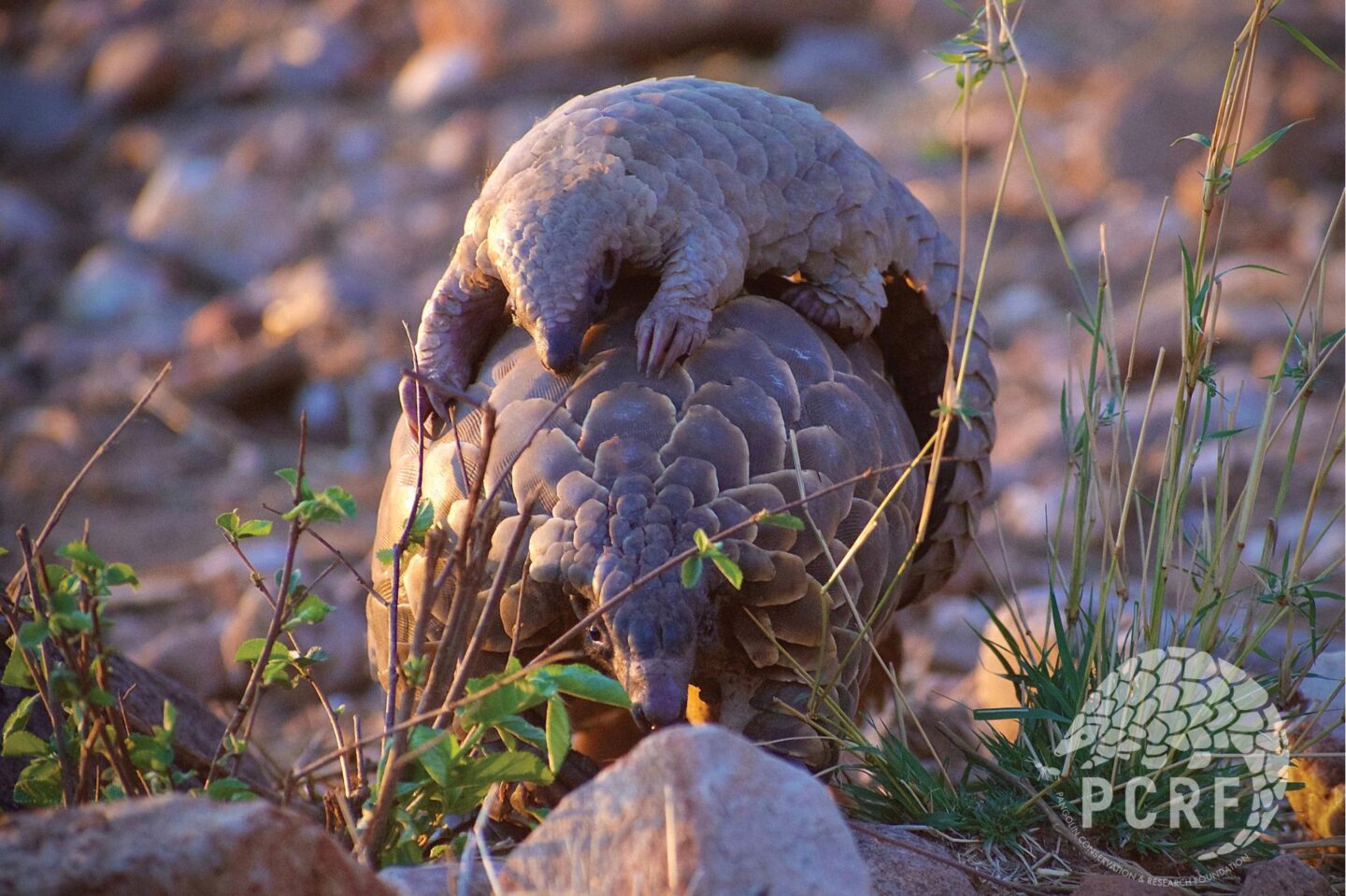
On the Frontlines of
PANGOLIN
PRESERVATION
Across the vast landscapes of central, northern and northeastern Namibia, the plight of the pangolin, an inconspicuous creature, continues. This small mammal plays a major role in the bushland ecosystems of sub-saharan Africa and, as the most trafficked mammal in the world, lives under an ever-present dark cloud of threat. Enter Namibia’s newest concerted effort trained directly at the preservation of this important species – the Namibian Pangolin Working Group.
Text Namibian Pangolin Working Group | Photographs Namibian Pangolin Working Group
From the Autumn 2022 issue
The Namibian Pangolin Working Group (NPWG) was established in April 2020 as a collaborative effort between the Namibian government and non-governmental partners in response to the increasing threats faced by pangolins (Temminck’s ground pangolin, Smutsia temminckii) in Namibia. The NPWG is chaired by Kenneth Uiseb of the Ministry of Environment, Forestry, and Tourism (MEFT) and the secretariat is Kelsey Prediger. Member organisations include stakeholders of many backgrounds including MEFT, Biodiversity Research Centre of Namibia University of Science and Technology (BRC-NUST), Namibian Chamber of Environment (NCE), Namibia Animal Rehabilitation Research and Education Centre (NARREC), Rooikat Trust, and the Pangolin Conservation and Research Foundation (PCRF). More information about supporting the NPWG, its members and their work can be found at n-c-e.org/namibian-pangolin-working-group.
In 2021, the NPWG made big strides towards improving the conservation of pangolins in Namibia. The NPWG drafted a National Pangolin Conservation Management Plan and Action Logframe for 2021 to 2026. Additionally, a handbook was developed for first responders, including MEFT and law enforcement officers, with guidelines for the handling of confiscated pangolins and a First Responders Manual developed by NARREC.
The NPWG has provided resources and training for first responders in the regions most affected by illegal wildlife trade. These regions have received specially designed holding boxes to transport confiscated pangolins safely to veterinarians, rehabilitation centres and release sites. A training curriculum was developed and materials were distributed during training workshops which reached over 100 front-line officers.
A network of veterinary clinics across six regions has been established to provide health assessments and emergency care for live confiscated pangolins. All clinics were offered a training seminar in emergency first response by a specialist veterinarian with extensive experience in the care of pangolins. Since the training, nearly all live confiscated pangolins have gone for a health assessment. Additionally, a veterinary emergency fund has been set up with an initial amount of N$40,000 contributed by the Namibian Chamber of Environment (NCE) and Rooikat Trust.
A distribution map was created from a sightings survey (which is still open for reporting any pangolin sightings), as well as game count and event book records from national parks and conservancies. Through collaboration, five live confiscated pangolins have been tagged for post-release monitoring through the Pangolin Conservation and Research Project (PCRP). A programme on priority research needs has been developed, and a number of research initiatives have started, including on the survival of rehabilitated animals, food and feeding preferences and a new project on the impact of electric fences on pangolins and other vulnerable species.
Posters have been created, including on the reward scheme for reporting illegal pangolin trade and on pangolin biology and ecology. A comic has been developed for children in Namibia and will be distributed to local schools. Members of the NPWG regularly issue media releases, radio interviews, popular articles and public talks to help educate and spread awareness.
WHAT CAN YOU DO TO SAVE PANGOLINS?
The Pangolin Conservation and Research Foundation (PCRF) was founded in 2021 as a section 21 not-for-profit organisation to fill the gap in conservation efforts for pangolins. Their aim is to ensure a sustainable future for pangolins through conservation, research, collaboration, education and awareness, community engagement and local empowerment. Conservation research projects focus on subjects which help guide protocols and conservation management planning, including research of resident pangolins and post-release monitoring of trafficked-released individuals for the Pangolin Conservation and Research Project (PCRP). The PCRF is developing children’s educational material to help raise awareness and improve education on the conservation of pangolins. Additionally, they employ pangolin rangers within communities across the country to protect pangolins while supporting their community. Local students have the opportunity to work on pangolin- focused projects to empower them for a future in pangolin conservation.
There has been minimal research completed within Namibia. For this reason, the PCRP aims to study all details of ecology and genetics for the Temminck’s ground pangolin in Namibia. The overall goal of this project is to understand the home range sizes, activity patterns, population dynamics, prey preference, and overall ecology of pangolins in priority habitat sites and to gather further information about their behaviour and survival strategies. Additionally, the project conducts post-release monitoring for trafficked-released pangolins in order to shed light on the survival rates and reintegration of those rescued from the illegal wildlife trade. Genetic data will be utilised to determine the origin of seized pangolins and better understand their genetics. The end goal of collecting this data is to create biological baseline knowledge which can be applied to a national action plan and protocols or guidelines for ground pangolins and utilised across their range. Another very important objective is to increase awareness of the vulnerable status of southern Africa’s only pangolin species.
In their first year they tagged five trafficked- released pangolins for post-release monitoring and three resident pangolins for baseline ecological research. Learning more about the species across their habitat is essential for conservation planning. The two most recent releases have demonstrated positive settling behaviour and their home ranges are comparable to that of resident pangolin ranges. TNN
SPREAD AWARENESS!
Share what you have learned with others to raise awareness on why it is important to protect pangolins. If you see a pangolin, appreciate its presence but please leave it to be free and safe in its home environment. Do not tell others about the location where you found it for its own protection.
REPORT SUSPICIOUS ACTIVITY TO THE HOTLINE: 55555
Suspicious activity includes:
- Killing or capture of pangolins
- Keeping pangolins in captivity
- Possessing pangolin and/or pangolin parts
- Trade in pangolins (dead or alive) and/or pangolin parts
- People asking about pangolins or offering pangolins or pangolin parts for sale.


